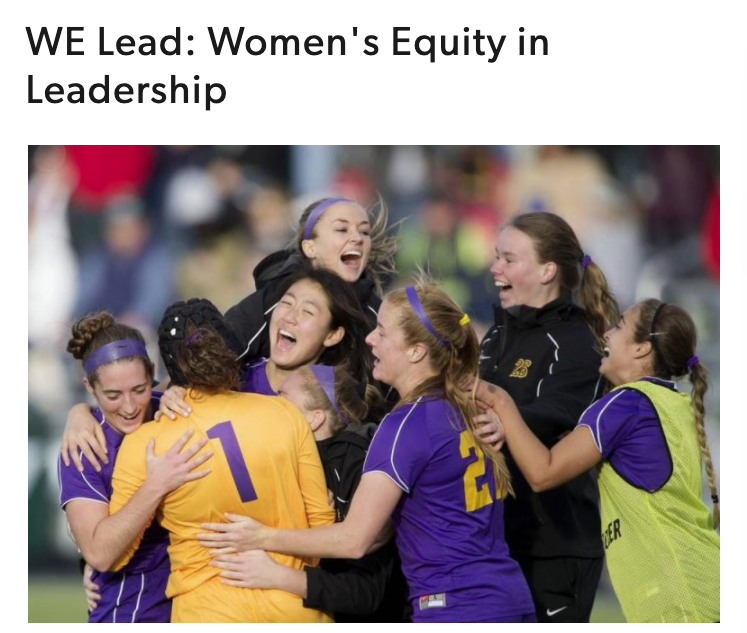Williams College has created meaningful and intentional methods for engaging with an untapped and powerful market by increasing fundraising from women. Working with female prospects and volunteers, their goal is to inspire 100 gifts of $100,000 or more from female leadership donors by 2025. Additionally, they aim to have women represented at every level of the annual fund giving pyramid in proportion to the overall population.
The statistics that started the conversation
Leadership Gifts are an important contributor to annual fund goals. However, when we focus exclusively on the dollars, it can be too easy to overlook the people behind the gifts.
We chatted with Elizabeth Martin, Director of Women’s Leadership Giving within the Alumni Fund at Williams College to hear about their efforts to increase female leadership giving. It all began when they crunched the numbers from their previous campaign.
When Williams College looked back at their Teach It Forward campaign, which concluded in 2019, the numbers looked good: more than $707 million dollars raised from 24,903 individual alumni and parent donors — and 74.3% of all alumni contributed to the campaign. But a deeper dive revealed important details: while women were well represented among the total donor population and among major donors, they were severely under-represented among leadership annual fund donors.
Leadership gifts at Williams College are defined as gifts ranging from $2,500 to $250,000, and are a key indicator of future major gifts. At that time, 39% of their alumni base were women. However, gifts from those women were only making up 26% of total leadership level gifts. Elizabeth says, “In 2038, 50% of our alumni base will be women. While Teach It Forward was highly successful, any future campaign will be increasingly reliant on major gifts from female donors.”
Upon review of their data and giving gap, Williams also realized that they were asking women for a leadership gift about half as often as they were asking men. This trend extends beyond leadership giving, and because Williams’ Alumni Fund is largely peer-to-peer, it was churning up great leads from men, which represent a majority of their alumni body.
Solutions led by women
At the same time they were crunching numbers, Williams enlisted a group of alumnae to help address these issues. What resulted was a committee called WE Lead, a group of 11 women dedicated to closing the giving gap and engaging with this untapped and powerful market. They wanted to connect with female donors across all levels and classes.
“Their main goal is to help Williams College think strategically about how to engage alumnae ”, Elizabeth says. “‘Are we centering the woman as the donor?’, or, ‘How can we do this better?’ They are also working to develop women’s fundraising events in order to engage women at all levels, and, frankly, simply sharing that there are different levels of giving.”
Using lists they generate in EverTrue, Williams will often identify women who are right on the cusp of leadership level giving by looking at their giving history. “It’s always interesting to pull a list and see the group of women who are giving $2,000. Do they know that there’s an opportunity for them to be a leadership donor?” Elizabeth says. They use the lists in EverTrue to find those hidden gems, but also for inviting women to events and general committee outreach. So far, thanks to WE Lead and the simple fact of looking intentionally for women leadership donors, Williams has increased representation by nearly 25% over the last five years.

The W: A Force for Williams
In addition to the conversations with WE Lead and working toward representation across the giving pyramid, Williams also created a new stewardship program designed to inspire six-figure annual fund gifts from women. “Our goal is to have 100 women join, with gifts of 100,000 dollars or more by 2025”, says Elizabeth. 2025 will be their 50th reunion of the first class of women graduates to study all four years, which is a significant milestone for the college.
Dartmouth’s Centennial Circle was a clear inspiration for the project that became The W: A Force for Williams, but initial internal conversations were less ambitious. “Prior to 2019, only ten women had ever made gifts of this size to the Alumni Fund. Initially, we were thinking about an ambitious goal of 50 women before the 50th reunion of the Class of ’75.”
Analysis using EverTrue turned up more highly engaged, rated female prospects than even the staff focused on inclusive fundraising practices had anticipated. They settled on that goal of 100 women with gifts of $100,000+ because they felt confident about the women in their alumni base and their capacity to give, based on data. Elizabeth notes, “It was important to us that we start asking, and really start bringing women to the table.”
How did The W become a force for Williams?
2020 was their founding year, and Williams had a goal of having 20 women join The W. They superseded their goal by bringing in 35 women in that first year alone, which shows the potential that exists by engaging with this untapped and powerful market.
“The fact that our data was telling us this was possible, and then to realize it was actually possible, was really exciting” Elizabeth says.
The three pillars of the W are: networking community, collective impact, and philanthropic mentorship. Women are drawn to a sense of community and networking events, and they are also keen on having a collective impact on the college’s fundraising efforts. Philanthropic mentorship was a pleasantly surprising pillar for Elizabeth, as there was a “deep desire within the group to teach philanthropy, give smart, and take ownership.” How does one talk to their child about philanthropy? Their spouse? “These are real and transparent conversations women are having, and it’s incredible.”
Today, The W is 42 women strong, and growing. They have been navigating the pandemic through monthly Zoom meetings, with opportunities for faculty, board chairs, and even the college’s President to come and speak at these virtual check-ins. They have managed to keep these women engaged and connected to the college, despite the obstacles as a result of the pandemic.
Elizabeth notes that “word of mouth has really helped bring women into the fold”, with the last 3 women having joined as a result of personal connections. One woman joined because her friend was in the group, so this peer to peer recommendation has been an unexpected outcome.
Continuing the good work using EverTrue
A large part of how they identify eligible women is through contact connections in EverTrue. They do this by looking at combinations of rated capacity, social connections, and engagements with the college more than previous gift activity. The lists they are able to generate in and export from EverTrue are vitally important.
Success in 2021 and Beyond
Now more than ever, it is important for colleges and universities to intentionally look for their own gaps in donor behavior, to uncover hidden gems of prospects, and identify female prospects for leadership giving. By engaging with this untapped and powerful market, universities can center their fundraising efforts around alumnae needs, interests, and points of pride.
Learn more about how you can use EverTrue to boost Leadership Giving. Talk with a member of the EverCrew and get started today!
